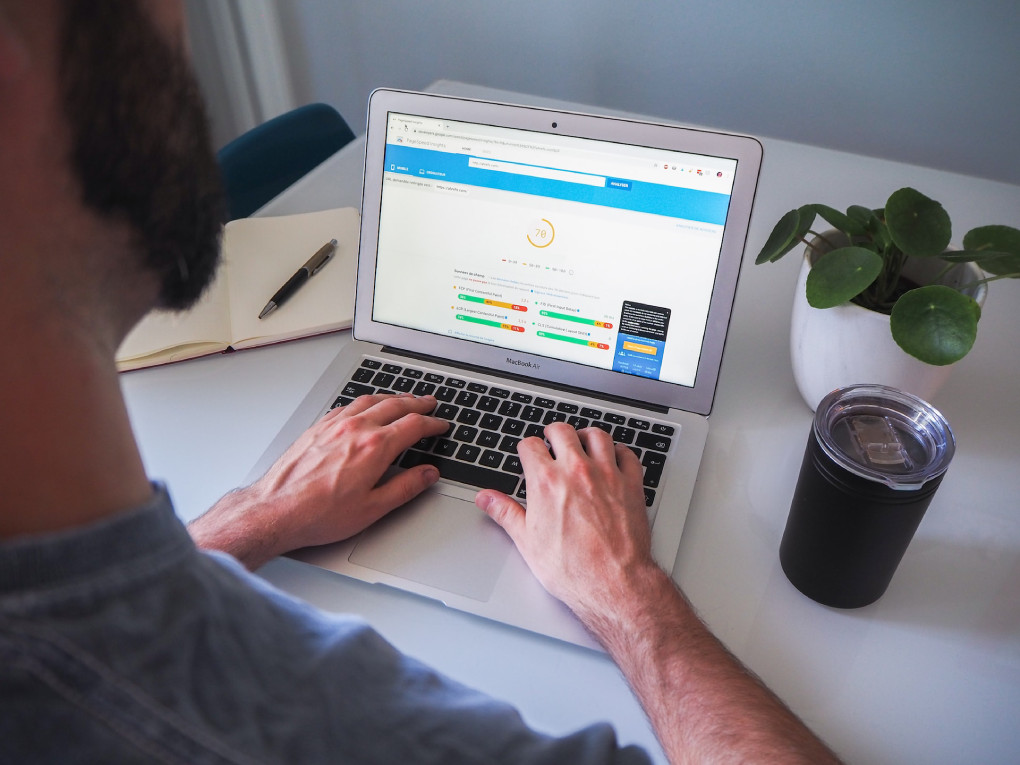11th January, 2024
How Page Speed Influences SEO and User Retention
In the fast-paced world of the internet, where attention spans are shrinking, the speed at which your website loads can make a significant difference in both search engine rankings and user satisfaction. In this post, we’ll explore the critical role that page speed plays in SEO and user retention and provide actionable tips for optimising your website’s performance.

The SEO Connection
Google’s Need for Speed
Google, the leading search engine, has been emphasising the importance of page speed as a ranking factor for years. In its quest to deliver the best possible user experience, Google considers page speed as a key element in determining search rankings. Websites that load quickly are more likely to rank higher in search results, making it imperative for businesses to prioritise speed optimisation.
Core Web Vitals and User Experience
Google’s Core Web Vitals, introduced in recent years, include metrics such as Largest Contentful Paint (LCP), First Input Delay (FID), and Cumulative Layout Shift (CLS). These are essentially a set of metrics or measurements that Google uses to assess the user experience of a website. These metrics focus on specific aspects influenced by the speed of a webpage.
Largest Contentful Paint (LCP) measures the time it takes for the largest element (such as an image or a block of text) on a webpage to become visible.
First Input Delay (FID) is concerned with interactivity and responsiveness. It measures the time between a user’s first interaction with the page (like clicking a button) and the browser’s response to that interaction. This helps assess how quickly users can start engaging with the webpage without experiencing delays.
Cumulative Layout Shift (CLS) evaluates visual stability. It measures how much the elements on a page shift or move around during the loading process. This metric aims to ensure that users aren’t unexpectedly clicking on the wrong elements due to sudden layout change.
By optimising these Core Web Vitals, not only do you enhance your SEO performance, but you also create a more enjoyable and user-friendly environment for your website visitors.
User Retention Matters
First Impressions Count
Imagine clicking on a link and waiting for what feels like an eternity for the page to load. Frustrating, right? Users share this sentiment. Research consistently shows that users are more likely to abandon a website if it takes too long to load. In a world where instant gratification is the norm, a slow website can leave a negative first impression and drive users away.
Bounce Rates and Conversion Impact
High bounce rates, a metric that measures the percentage of visitors to a website who navigate away from the site after viewing only one page, often correlate with slow-loading pages. When visitors encounter delays, they are more likely to leave without exploring further. This not only impacts user retention but also diminishes the chances of converting visitors into customers. Improving page speed can reduce bounce rates and contribute to higher conversion rates.
Optimise Images and Media
Large image and media files can significantly slow down a website. Compress and optimise images to strike a balance between quality and file size. Consider lazy loading techniques to load images only when they come into the user’s viewport.
Don’t have Photoshop or a similar costly photo editor to crop and resize your images? Try PhotoPea.
Minimise HTTP Requests
Each element on a webpage, such as images, scripts, and stylesheets, requires a separate HTTP request. Minimise these requests by combining files, using CSS sprites, and reducing unnecessary elements on your pages.
To help with this, when we’re developing sites we make sure to compile all of our styles and scripts into single bundles.
Utilise Browser Caching
Enable browser caching to store static files on visitors’ devices temporarily. This reduces the need for repeated downloads, improving load times for returning visitors.
When we talk about “browser caching,” we’re essentially referring to the practice of temporarily storing copies of static files, such as images, stylesheets, and JavaScript files, on the visitor’s device. Instead of downloading these files anew every time a user visits a page on your website, the browser can retrieve them from the local cache, significantly improving the overall load time and user experience.
Implement Content Delivery Networks (CDNs)
CDNs distribute your website’s static content across servers worldwide, reducing the physical distance between the user and the server. This results in faster loading times, especially for users accessing your site from different regions.
Regularly Monitor and Test Page Speed
Use tools like Google PageSpeed Insights, or GTmetrix to regularly assess your website’s performance. Monitor how changes impact your page speed and adjust your optimisation strategies accordingly. We always check scores of sites we’re looking to improve, having clear targets laid out helps narrow down on what tasks are most valuable.
Conclusion
In the competitive landscape of the internet, where users demand instant access to information, page speed is a critical factor influencing both SEO and user retention. By prioritising and continually optimising your website’s speed, you not only enhance your search engine rankings but also create a positive and engaging experience for your visitors. Remember, in the digital realm, speed truly is of the essence.
Optimise for speed, and watch your website soar to new heights in both search engine rankings and user satisfaction.
Thanks for reading and thanks ChatGPT for your assistance in creating this post.